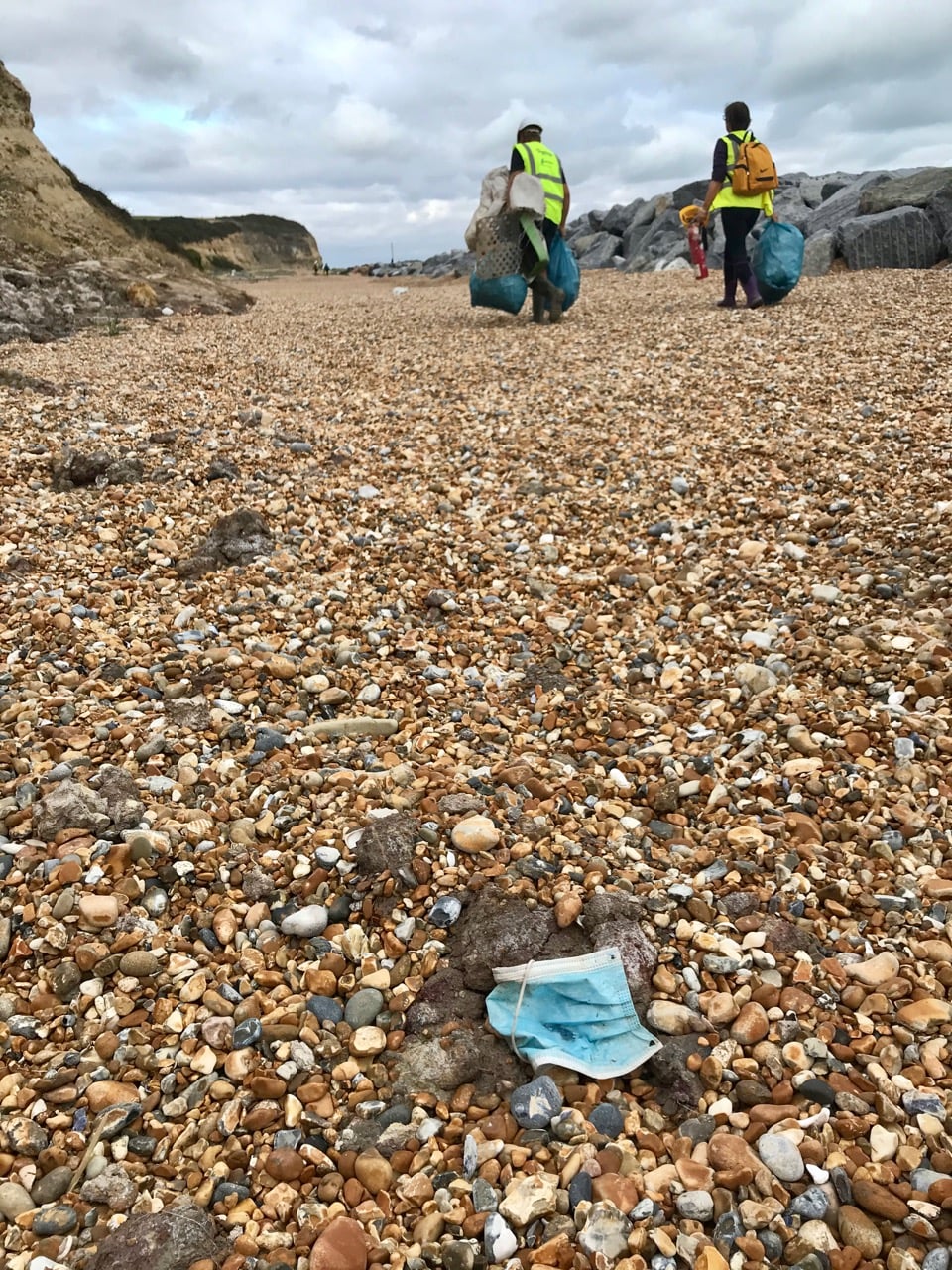Our long-planned clean-up and survey project was able to go ahead in August/September 2020. Mindful of COVID-19 restrictions, we went out in small groups over several days, in partnership with a team from the Pett Level Independent Rescue Boat.
See Andy’s blog, originally posted in 2015, telling the story of this project.

Background
The berm was constructed to protect the cliff which has been eroding and crumbling into the sea. Sadly, a lagoon of rubbish is building up behind the berm. Where did it come from? The sea left it there, but much of it has come from land-based activities. All of it has come from human activities! So what is there? Plastic single-use items – bottles; remains of fishing equipment – net, rope, traps; sewage-related items – tampon applicators, cotton bud sticks that have been flushed; and polystyrene pieces in their millions from packaging, fishing boxes etc. One positive outcome is that it has been taken out of the sea and won’t be endangering marine animals. But what of the strandline animals living where the land meets the sea?

The rubbish is only accessible at low tide after a 30 minute walk (potentially in danger of being cut off), and so not too many people may know it is there. Our Strandliners beachcombing walk in January revealed the extent of the polystyrene lagoon. We had originally planned a week of cleaning and recording sessions May, in partnership with the Pett Level Independent Rescue Boat. Postponed due to the lockdown, it finally went ahead during August and September.
The project
After eight sessions walking around the crumbling cliff on a receding tide our wonderful volunteers cleared 107 bags totalling 367kg. All clean ups are short term unless there is some attempt to collect information on what the pollution is in the first place. Only then can long term change happen.
These events were not as glamorous as beach surveys as it was historic rubbish amongst mud, water and non-native plants. Indeed it may have been one of the hardest surveys yet. Once the rubbish was bagged and safely stored at various locations, the amazing Pett Level Independent Rescue Boat team used this project as a training exercise and took the bags around the headland at high tide to the Pett Level slipway for collection by Biffa.
The results
Due to the sheer volume of rubbish collected, we were unable to carry out a survey in the usual way, but separated everything into polystyrene, plastic bottles and general rubbish, much of which was also plastic.
Here are the results of the shortened survey…
Polystyrene/foam = 146kg = 40% (mainly fishing related and remains of the fast food industry)
Plastic drinks bottles = 76kg = 21% (we need a bottle deposit return scheme NOW!)
General rubbish = 145kg = 39% (very little obvious recent beach visitor litter)
You can see some of our photographs below. Images copyright Andy Dinsdale and Strandliners, except where shown.

On our way to the site. A 45 walk, away from the crumbling cliffs.


Animal bite marks. Is the polystyrene from an old fishing crate?


A plastic fork imitating the reeds. And who lost this? How many years have passed?


This coastline plant is living in an old polystyrene fishing float. The float could have been for the British or American fishing industry. Will nature overcome?


Only one mask found – fresh and miles from anywhere! This area is beautiful, we missed the storms.

Out of sight, out of mind. The vegetation hid much pollution.


Mylar balloons. The remains of these balloons last for years and years.

Plastic pollution can quickly get covered by the beach, only to get washed out at another high tide or storm.

Once bagged the work is not over



Meteorological balloon remains, including a Lockheed and a Vaisala radiosonde

Pett Level Independent Rescue Boat on its way back with one load


Otrivin bottle – an English Channel mystery, and a Pullman slipper from a container spill

Everything is weighed.


Fuzzy felt pumpkin, and does anyone recognise this warrior?

Marine animals had been eating this football!

So many plastic bottles…

…and so many bags to collect

Which is plastic? Which is natural?

Many training exercises to rescue the rubbish!

Sharps. From shipping & out at sea? From beach visitors? From down the toilet?

Surveying this takes time, it is not as easy as just bag it up and that’s it. We need to have data on the pollution around us otherwise we will never know what it was or how much of it there was.

A happy but weary group of Strandliners volunteers.
